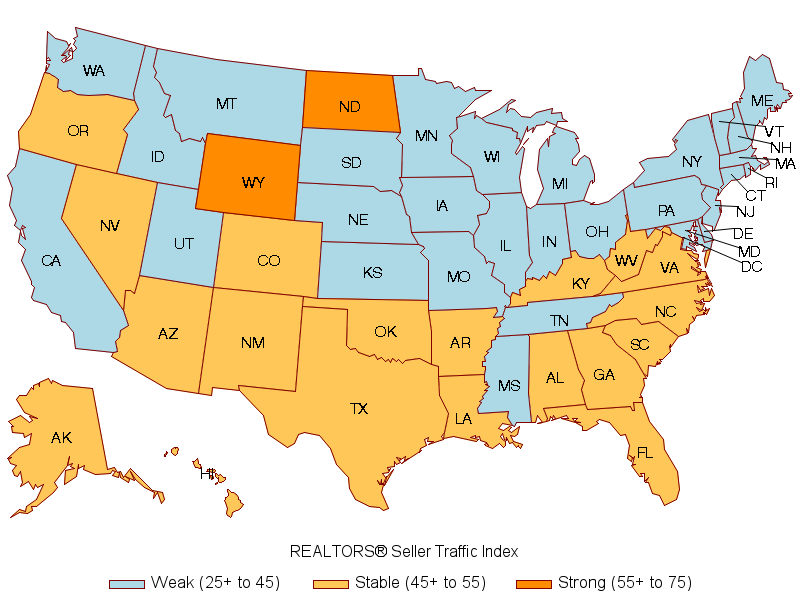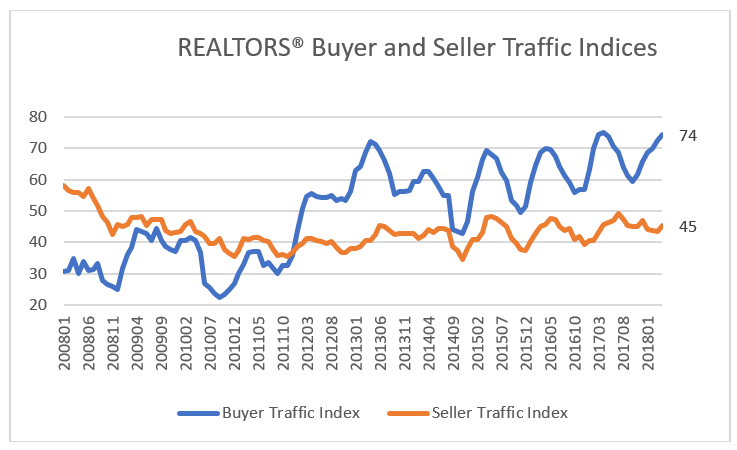In a monthly survey of REALTORS®, respondents are asked “Compared to the same month last year, how would you rate the past month's traffic in neighborhood(s) or area(s) where you make most of your sales?” Respondents rate seller traffic as “Stronger” (100), “Stable” (50), or “Weaker” (0) and the responses are compiled into a diffusion index. An index greater than 50 means that more respondents reported “stronger” than “weaker” conditions.
The chart below shows seller traffic conditions in February–April 2018 compared to conditions one year ago, according to the April 2018 REALTORS® Confidence Index Survey. REALTORS® reported that seller traffic conditions were “weak” in April 2018 compared to one year ago in 29 states, which includes states such as Washington, California, Montana, Idaho, Utah, Ohio, Tennessee, New York and Massachusetts where buyer traffic has increased compared to one year ago. In states such as Florida and Texas, REALTORS® reported that buyer traffic was stronger but seller traffic has not increased compared to one year ago.[1]

The supply of homes for sale continues to fall behind the housing demand. Nationally, the REALTORS® Seller Traffic Index registered at 45 in April 2018, while the REALTORS® Buyer Traffic Index was at 74. An index greater than 50 means that more respondents reported “stronger” than “weaker” conditions.

Supply remains low in many areas. For example, in San Jose-Sunnyvale-Sta. Clara, listings are down nearly 20 percent from one year ago, as well as in Bakersfield, CA (-27%), Fresno (-21%), and San Francisco-Oakland (-6.4%). However, listings are up in areas such as Sta. Rosa (49%), Sacramento-Roseville-Arden Arcade (13%) and Napa Valley (15%).
Use the data visualization below to view the change in active listings on Realtor.com in April 2018 from one year ago. Metro areas with lower listings are depicted in orange.
[1] In generating the indices, NAR uses data for the last three surveys to have close to 30 observations. Small states such as AK, ND, SD, MT, VT, WY, WV, DE, and D.C., may have fewer than 30 observations. For graphical purposes, index values from 25.01 to 45 are labeled “Weak,” values of 45.01 to 55 are labeled “Stable,” values of 55.01 to 75 are labeled “Strong,” and values greater than 75 are labeled “Very Strong.”








